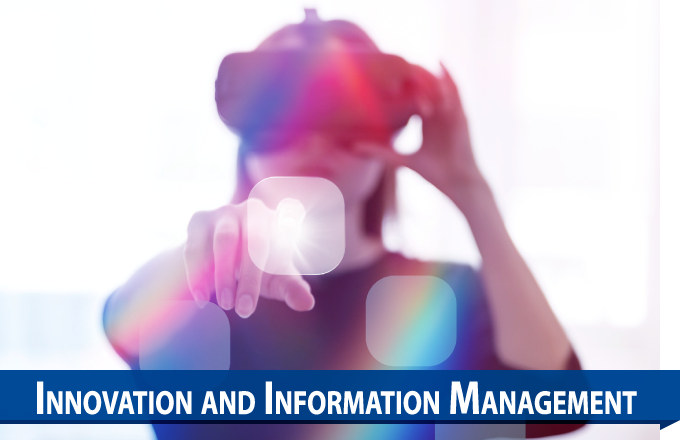We provide a meta-analytic examination of the regulatory strategies that employees adopt to cope with different types of stressors in the workplace and how these strategies are linked to work and personal outcomes. Drawing from regulatory focus theory, we introduce a new taxonomy of promotion- and prevention-focused coping that complements the traditional taxonomy of problem- and emotion-focused coping in the transactional theory of stress. In addition, we propose that challenge stressors tend to evoke promotion-focused coping, whereas hindrance stressors tend to evoke prevention-focused coping. As a pair of important coping mechanisms in the work stress process, promotion-focused coping is positively related to employees’ job performance, job attitudes, and personal well-being, whereas prevention-focused coping is negatively related to these outcomes. We conducted an original meta-analysis of coping strategies in the workplace and tested the hypotheses with 550 effect sizes drawn from 156 samples that involved a total of 75,344 employees. We also tested the tenability of the proposed stressor-coping-outcome processes using meta-analytic path models and further examined the robustness of these models using full-information bootstrapping technique. The results converge to show that promotion- and prevention-focused coping serve as important intervening mechanisms that account for the relationships between work stressors and individual outcomes.
October 2019
Journal of Applied Psychology
The Dodd-Frank Act shifted regulatory jurisdiction over “midsize” investment advisers from the SEC to state-securities regulators. Client complaints against midsize advisers increased relative to those continuing under SEC oversight by 30 to 40 percent of the unconditional probability. Complaints increasingly cited fiduciary violations and rose more where state regulators had fewer resources. Advisers responding more to weaker oversight had past complaints, were located farther from regulators, faced less competition, had more conflicts of interest, and served primarily less-sophisticated clients. Our results inform optimal regulatory design in markets with informational asymmetries and search frictions.
October 2019
American Economic Review
Drawing on self-enhancement theory, we propose that, intraindividually, employees tend to give themselves credit when they engage in creativity. Perceived creative credit, in turn, activates multiple psychological motives that ultimately affect deviance. On the one hand, perceived creative credit is associated with greater creativity-driven norm-breaking motives and greater entitlement motives, which in turn should increase deviance. On the other hand, perceived creative credit is associated with greater image preservation motives, which in turn should decrease deviance. A within-person study involving 206 employees and their coworkers conducted over a 10-day period provided broad support for the proposed model. In addition, a between-person variable, namely rewards for creativity, moderated the self-crediting process. The within-person serial mediation relationship between creativity and deviance was positive and significant for employees who perceived low rewards for creativity, but was not significant for those who perceived high rewards for creativity. In other words, rewards for creativity in the workplace effectively nullified this within-person self-crediting mechanism among employees. This study thus illustrates that, within individuals, creativity and deviance are related through perceived creative credit and different psychological motives (i.e., serial mediation). However, the strength of this serial mediation relationship varies depending on the availability of formal rewards for creativity (i.e., moderated serial mediation).
September 2019
Journal of Applied Psychology
Emergency departments (EDs) typically use a triage system to classify patients into priority levels. However, most triage systems do not specify how exactly to route patients across and within the assigned triage levels. Therefore, decision makers in EDs often have to use their own discretion to route patients. Also, how patient waiting is perceived and accounted for in ED operations is not clearly understood. In this paper, using patient-level ED visit data, we structurally estimate the waiting cost structure of ED patients as perceived by the decision makers who make ED patient routing decisions. We derive policy implications and make suggestions for improving triage systems. We analyze the patient routing behaviors of ED decision makers in four EDs in the metro Vancouver, British Columbia, area. They all use the Canadian Triage and Acuity Scale, which has a wait time–related target service level objective. We propose a general discrete choice framework, consistent with queueing literature, as a tool to analyze prioritization behaviors in multiclass queues under mild assumptions. We find that the decision makers in all four EDs (1) apply a delay-dependent prioritization across different triage levels; (2) have a perceived marginal ED patient waiting cost that is best fit by a piece-wise linear concave function in wait time; (3) generally follow, in the same triage level, the first-come first-served principle, but their adherence to the principle decreases for patients who wait past a certain threshold; and (4) do not use patient complexity as a major criterion in prioritization decisions.
September 2019
Manufacturing & Service Operations Management
User-generated content (UGC) is increasingly used in the marketing communication mix for promoting products. This research investigates how firms can actively manage consumer-generated reviews in the form of highlighting authentic reviews at firms’ discretion. Whereas highlighting a positive review is expected to lead to positive product evaluations, this practice may elicit consumers’ skepticism if consumers are explicitly informed of the promotional intent of the firm. In three studies, we examine the effect of presenting a firm-highlighted review on consumers’ consumption intention and behavior. Our findings confirm that highlighting a positive consumer review can effectively attract consumers’ attention to this review. However, the heightened attention does not always lead to higher consumption likelihood. In particular, the extremity of a highlighted review will interact with the variance of the review context as well as the reputation of the firm being reviewed to determine the effect of the firm-highlighting practice on consumers’ consumption behavior. When other reviews convey mixed opinions or when the firm has not established a strong reputation, highlighting a positive but less extreme review may effectively improve the likelihood of consumption, but highlighting a review that is extremely positive will not.
September 2019
Information Systems Research
This paper documents that changes in litigation risk affect corporate voluntary disclosure practices. We make causal inferences by exploiting three legal events that generate exogenous variations in firms' litigation risk. Using a matching-based fixed-effect difference-in-differences design, we find that the treated firms tend to make fewer (more) management earnings forecasts relative to the control firms when they expect litigation risk to be lower (higher) following the legal event. The results are concentrated on the earnings forecasts conveying negative news and are robust to alternative specifications, samples, and outcome variables.
September 2019
The Accounting Review
Combining the theses of “problemistic search” and “slack search,” past research in the behavioral theory of the firm suggests that both low- and high-performing firms may engage in the same type of risk-taking activity. We counter this view with a consistent, motivation-based logic in the theory: low-performing firms are fixated on finding short-term solutions to immediate problems, so they have an increased probability of exhibiting deviant risk-taking behavior such as bribery, whereas high-performing firms are concerned about sustaining their competitive advantage in the long run and will more likely engage in aspirational risk taking such as research and development (R&D). Using a sample of 9,633 firm-year observations covering 2,224 listed companies in China, we find that, as a firm’s performance falls further below its aspiration level, it has larger abnormal entertainment spending, an implicit measure of bribery expenditure, but not higher R&D intensity. However, as a firm’s performance rises further above its aspiration level, it has greater R&D intensity, but not more bribery expenses. Legal development and industry competition moderate the relationship between performance feedback and risk-taking behavior.
August 2019
Academy of Management Journal
Gesture-based interaction has greatly changed the way in which we interact with online products by allowing users to control digital systems with hand movements. This study investigates how gesture-based interaction modes, namely, mid-air gesture and touchscreen gesture, compared with mouse-based interaction, affect consumers’ virtual product experiences (VPE) by eliciting mental imagery (i.e., haptic imagery and spatial imagery). Furthermore, we explore how visual product presentation can be designed to facilitate different types of interaction modes. Through a lab experiment, we find that touchscreen gesture outper- forms mid-air gesture and mouse-based interaction in terms of eliciting haptic imagery, and this effect is mitigated when 3D presentation is used. We also find that mid-air gesture outperforms touchscreen gesture and mouse-based interaction in terms of eliciting spatial imagery when 3D presentation is used. Both haptic imagery and spatial imagery can further reduce consumers’ product uncertainty. Our results extend prior work on interactivity design of VPE and further contribute to the emerging literature on gesture-based interaction.
August 2019
Journal of Management Information Systems
We explore the governance effect of short-selling threat on mergers and acquisitions (M&A). We use equity lending supply (LS) to proxy for the threat, as short sellers incentives to scrutinize a firm depend on the availability of borrowing shares. Our results show that acquirers with higher LS have higher announcement returns. The effect is stronger when acquirers are more likely to be targets of subsequent hostile takeovers and when their managers wealth is more linked to stock prices. We conduct four sets of tests to mitigate endogeneity concerns. Finally, the governance effect exists only for deals prone to agency problems.
August 2019
Journal of Accounting and Economics

























